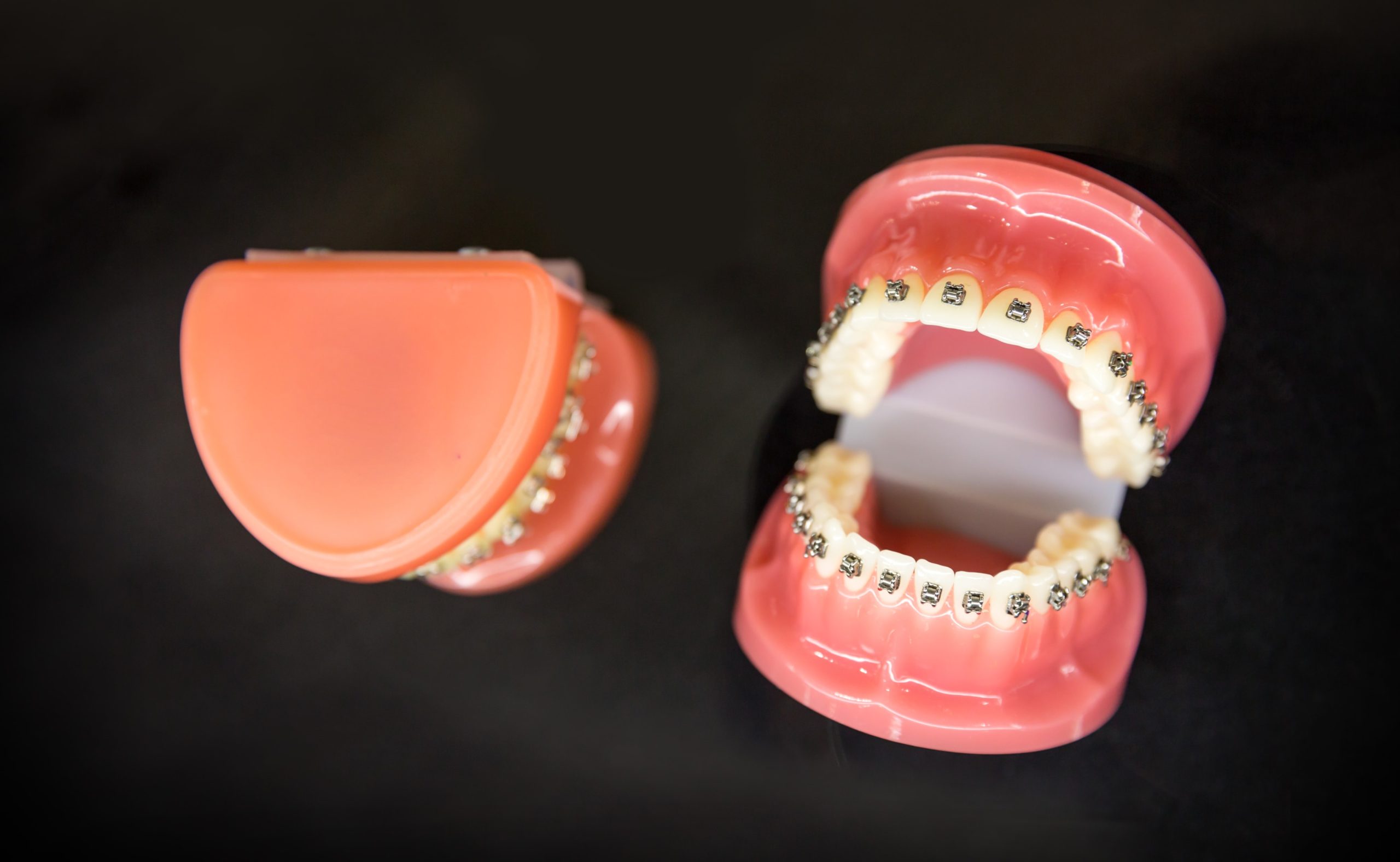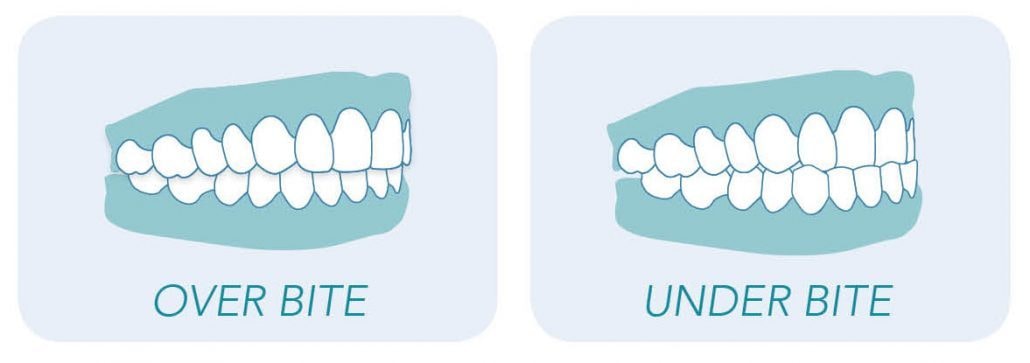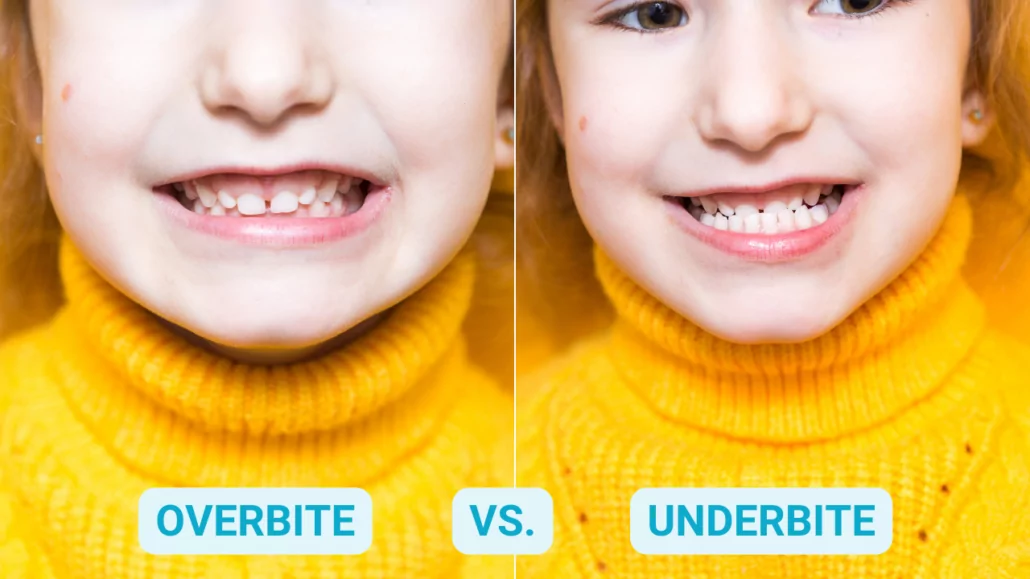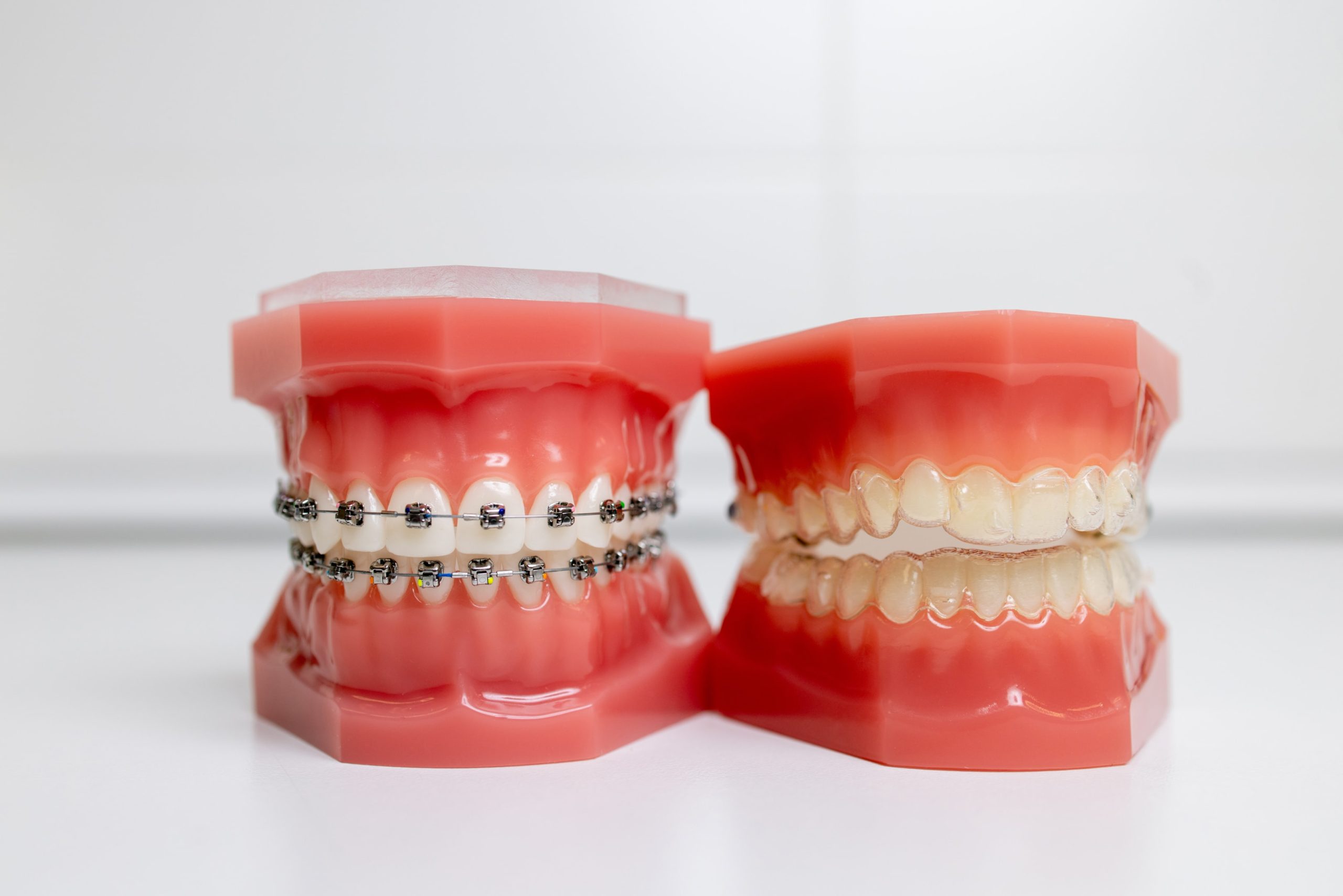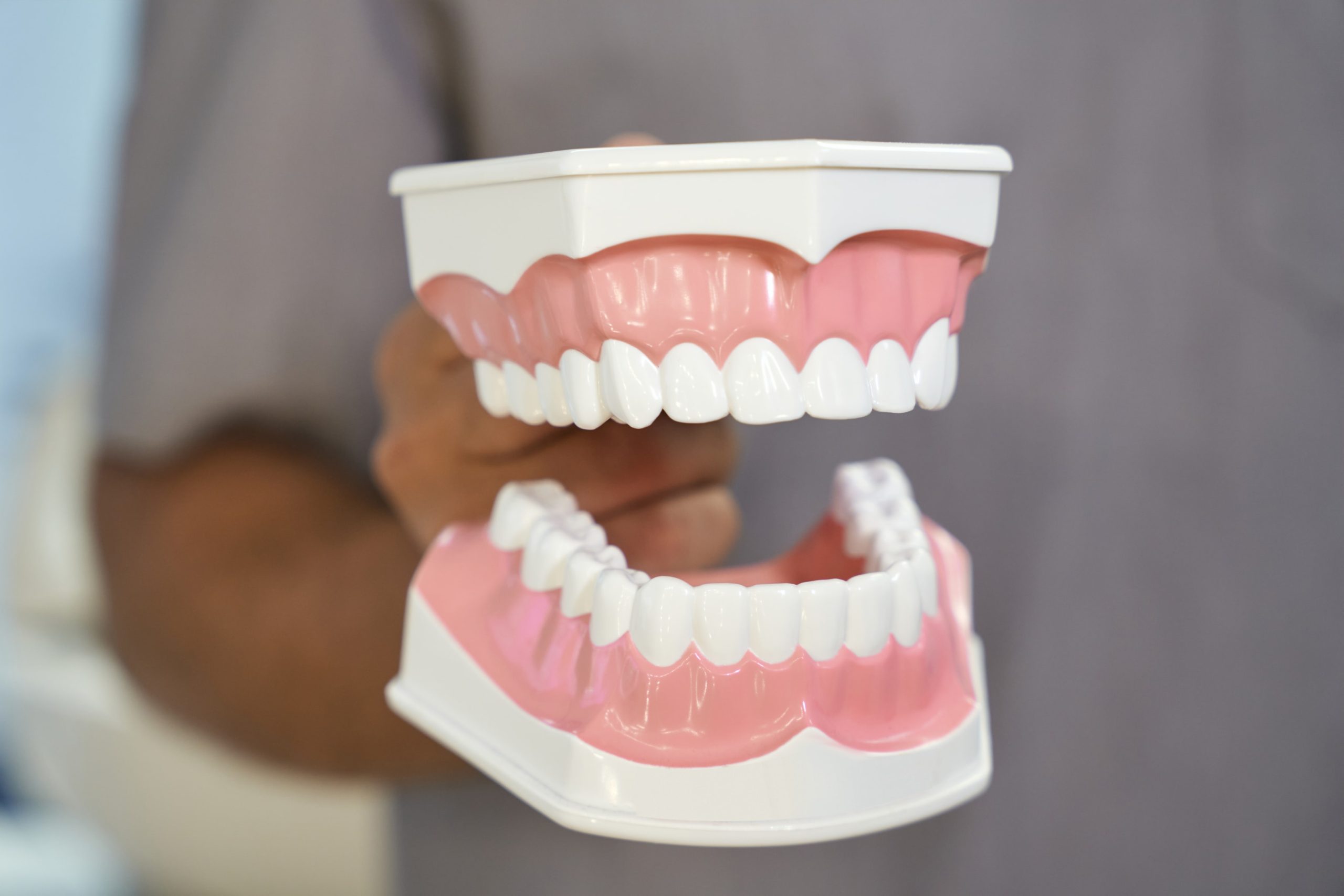When it comes to dental health, understanding the difference between an underbite and an overbite is crucial for ensuring your child receives the appropriate care.
At Impact Orthodontics in Calgary, AB, we specialize in treating these common dental issues for children ages 5 and up from SE and SW Calgary and surrounding communities.
This blog will delve into the impacts of both conditions, when treatment is necessary, and the various treatment options available.
The Fundamental Difference: Underbite vs. Overbite
What is an Underbite?
An underbite, also known as Class III malocclusion, occurs when the lower teeth extend beyond the upper teeth.
This misalignment often results in a prominent lower jaw and can lead to several complications if left untreated.
Underbites are usually hereditary but can also be caused by childhood habits such as thumb sucking or prolonged use of a pacifier.
In severe cases, corrective jaw surgery may be considered as a treatment option, especially for adult patients or when other non-surgical treatments have not been successful.
What is an Overbite?
An overbite, or Class II malocclusion, is characterized by the upper teeth significantly overlapping the lower teeth. This often results in the appearance of ‘buck teeth,’ where the upper front teeth protrude or flare out over the bottom teeth.
This condition, also referred to as a “deep bite,” can result from genetic factors, overuse of pacifiers, thumb sucking, or other habits during childhood.
Overbites can also occur due to the overdevelopment of the bone that supports the teeth.
Impact of Underbite vs. Overbite
Underbites and overbites can significantly impact dental health and facial aesthetics. These conditions often result from genetic factors, poor oral habits, or developmental issues.
The vertical overlap of the upper front teeth over the lower front teeth and the misalignment of the upper and lower teeth can lead to various bite problems and dental irregularities.
Complications of an Underbite: Jaw Pain
An untreated underbite can lead to several issues, including:
- Difficulty biting and chewing
- Jaw and temporomandibular joint (TMJ) pain
- Speech problems
- Increased risk of tooth decay and gum disease
- Sleep-disordered breathing such as sleep apnea
- Cosmetic concerns such as a “bulldog” appearance with a protruding lower jaw.
In severe cases, jaw surgery may be required to correct the underbite, involving procedures like bone grafting, jaw repositioning, and lengthening or shortening of the jaw bone.
Impact on Daily Activities and Self-Esteem
Children with underbites may find it challenging to engage in regular activities.
Eating certain foods can be difficult, leading to nutritional deficiencies.
Additionally, the aesthetic aspect of a protruding lower jaw can affect a child’s self-esteem and social interactions, potentially leading to psychological issues such as anxiety or depression.
Complications of an Overbite
Similarly, an untreated overbite can cause:
- Trauma to the front teeth
- Uneven wear of the enamel
- Speech difficulties
- Problems biting and chewing
- Gum and soft tissue damage
- Headaches and TMJ pain
- Increased risk of tooth decay and gum disease
- Airway obstruction and sleep-disordered breathing
An excessive overbite, where the degree of overlap between the upper and lower front teeth is too large, can lead to complications beyond just aesthetic concerns. In severe cases, it may even cause the lower teeth to bite into the roof of the mouth.
Impact on Breathing, Sleep Quality, and Upper Teeth Overlap
Overbites can significantly impact a child’s breathing, particularly during sleep.
The misalignment may obstruct the airway, causing sleep-disordered breathing conditions such as sleep apnea.
Poor sleep quality can lead to daytime fatigue, affecting academic performance and overall well-being.
Treatment Options for Underbite vs. Overbite
Underbites and overbites are common dental issues that can affect both children and adults. These conditions occur when the upper and lower teeth do not align properly, leading to various complications such as difficulty in chewing, speech problems, and jaw pain.
Treatment options for underbites and overbites include braces, clear aligners, and in severe cases, surgery. Misaligned teeth are a common cause of both underbites and overbites, as improper alignment can lead to individuals adjusting their bite to avoid discomfort.
Orthodontic Treatments
Braces
Both underbites and overbites can often be corrected with braces. Braces apply continuous pressure over time to move teeth into the desired position.
For children and teens, braces are an effective and common treatment option.
They can be used in conjunction with other orthodontic devices like rubber bands to correct the bite more comprehensively.
Braces work by gradually shifting the teeth and jaw into proper alignment.
For underbites, they can be combined with expanders or reverse pull headgear to encourage the upper jaw to grow.
For overbites, braces can help in pulling the upper teeth back and the lower teeth forward.
Invisalign
Invisalign offers a more discreet alternative to traditional braces.
These clear aligners can treat mild to moderate cases of underbite and overbite.
They work similarly to braces but are removable, making them a popular choice for many families.
Invisalign aligners are custom-made for each patient, providing a snug fit that helps in correcting the teeth’s position without the visibility of metal braces.
This option is particularly appealing to older children and teens who may feel self-conscious about their appearance during treatment.
Expanding the Scope of Invisalign
Invisalign has made significant advancements, allowing it to address more complex cases than before.
By incorporating attachments and elastics, Invisalign can effectively manage even severe malocclusions, providing a comprehensive treatment plan that adapts to the growing child’s needs.
Surgical Interventions: Corrective Jaw Surgery
In severe cases, especially in adults, surgery might be necessary to correct the jaw alignment.
Orthognathic surgery realigns the jaw bones and is often followed by orthodontic treatment to fine-tune the teeth alignment.
This combination can effectively address severe malocclusions that cannot be corrected by braces or aligners alone. In some instances, corrective jaw surgery is recommended for treating severe underbites in adult patients or when other non-surgical treatments have not been successful.
Surgical intervention is typically considered when orthodontic methods alone are insufficient.
The surgery involves repositioning the jaws to create a harmonious relationship between the upper and lower jaws.
Post-surgery, orthodontic appliances are used to ensure the teeth are aligned correctly within the new jaw position.
Post-Surgical Care and Recovery
Recovery from orthognathic surgery requires careful post-operative care, including maintaining a soft diet, regular follow-up appointments, and adherence to orthodontic adjustments. The long-term benefits, however, often include improved function, aesthetics, and overall quality of life.
Myofunctional Therapy
For younger children, myofunctional therapy can help by strengthening the muscles around the jaw. This therapy involves exercises that can correct habits contributing to the misalignment, such as improper swallowing and tongue thrusting.
Myofunctional therapy focuses on improving the function and coordination of the oral muscles, which can positively impact jaw alignment and dental health. Regular sessions with a therapist, combined with home exercises, can yield significant improvements over time.
Combining Therapies for Optimal Results
Combining myofunctional therapy with orthodontic treatment can enhance outcomes. By addressing the muscular aspects of jaw function, this integrated approach ensures a more stable and lasting correction of malocclusions.
Early Interceptive Treatment
Early intervention can be crucial. The American Association of Orthodontists recommends that children have their first orthodontic evaluation by age seven.
Early interceptive treatment can guide the growth of the jaw and teeth, making future treatments simpler and more effective. This might include the use of palatal expanders or other orthodontic appliances during the child’s growth phases. Guiding the growth of the upper front teeth is particularly important to ensure proper alignment and avoid malocclusions.
Phase 1 orthodontic treatment can address significant issues early on, potentially avoiding more invasive treatments later. For instance, a palatal expander can widen the upper jaw, correcting crossbites and creating space for crowded teeth.
Monitoring Growth and Development
Regular check-ups during a child’s growth phase allow orthodontists to monitor and adjust treatments as needed. This proactive approach can prevent minor issues from becoming major problems and ensure timely intervention for optimal results.
When to Seek Treatment
Early diagnosis and treatment are essential in preventing the complications associated with underbites and overbites.
If you notice your child having difficulty chewing, speaking, or if their teeth appear misaligned, it’s time to schedule a consultation. Early treatment can often prevent the need for more invasive procedures later on and can significantly improve your child’s quality of life. Noticing misalignment of the bottom teeth is particularly important, as early intervention can address issues before they worsen.
Observing changes in your child’s dental alignment or bite can help in identifying issues early. Regular dental visits are crucial, as your dentist can spot potential problems and refer you to an orthodontist if necessary.
Signs to Watch For: Misaligned Teeth
- Difficulty biting or chewing food
- Speech difficulties such as lisping or mispronunciation
- Frequent jaw pain or discomfort
- Noticeable misalignment of the teeth or jaw
- Breathing through the mouth instead of the nose
Why choose Impact Orthodontics?
At Impact Orthodontics, we’re committed to providing the best orthodontic care for families in SE and SW Calgary.
Here’s why we’re your best choice:
- Expertise: Our team is highly experienced and stays updated with the latest advancements in orthodontics.
- Community-Focused: We pride ourselves on serving our community with dedication and care.
- Comprehensive Care: From the initial consultation to post-treatment follow-ups, we’re with you every step of the way.
Conclusion
Understanding the differences between an underbite and an overbite, and the potential complications of each, is vital for ensuring your child’s oral health. At Impact Orthodontics, we offer a range of treatments tailored to meet the unique needs of each child. From traditional braces to innovative Invisalign and surgical options, we are committed to providing the highest standard of care.
By addressing these issues early, you can ensure your child grows up with a healthy, confident smile. For more information or to schedule an appointment, visit Impact Orthodontics or call us today. Your child’s health and happiness are our top priorities.
Final Thought: Early intervention and consistent care can transform your child’s health, leading to a brighter, pain-free future. Remember, the foundation of a beautiful smile starts with a well-aligned bite.
This comprehensive guide should help you better understand underbites and overbites, their impacts, and the treatment options available. By addressing these issues early, you can ensure your child grows up with a healthy, confident smile.
For more detailed information, feel free to contact us at Impact Orthodontics. Our team is here to provide the best possible care for your child’s orthodontic needs.


